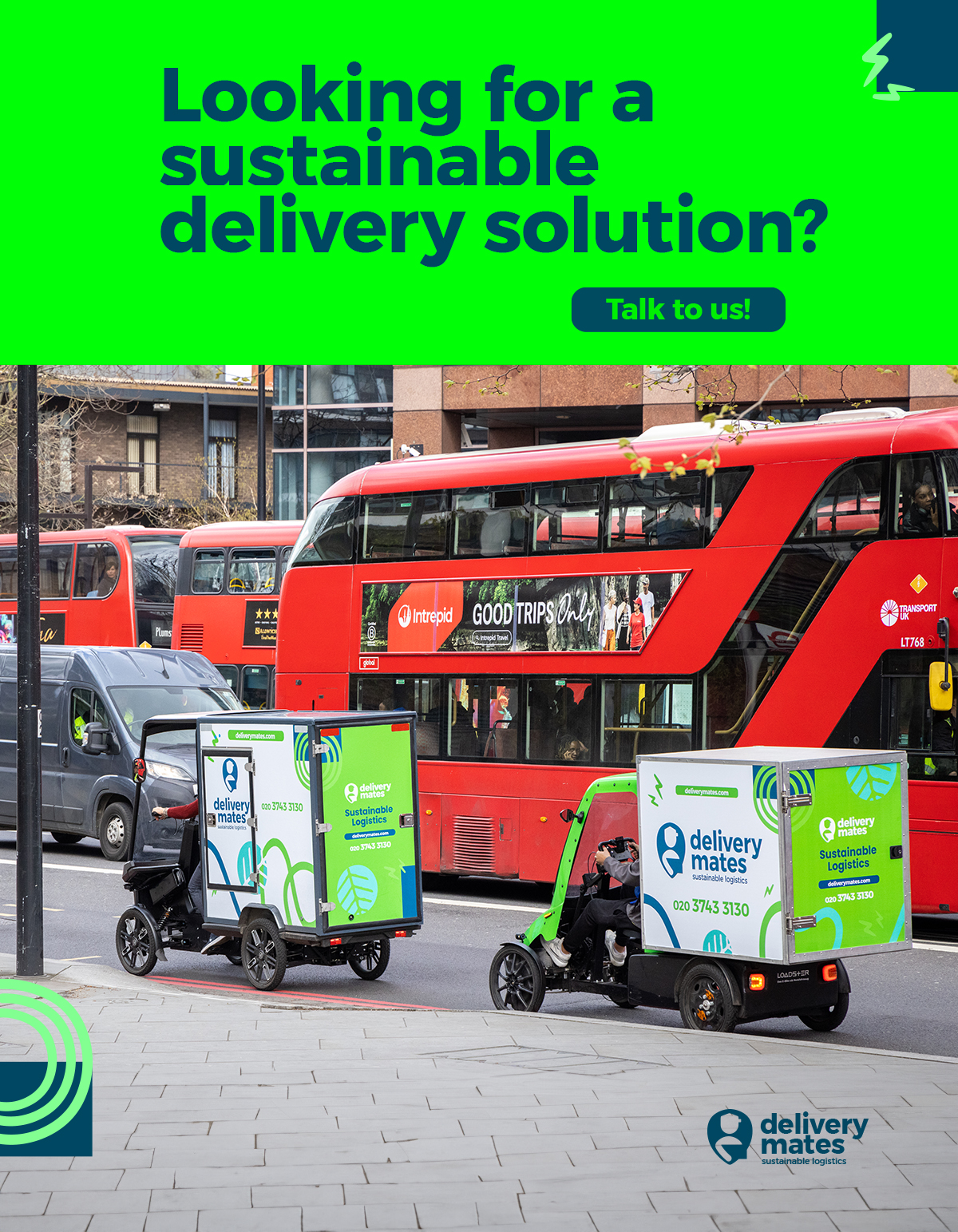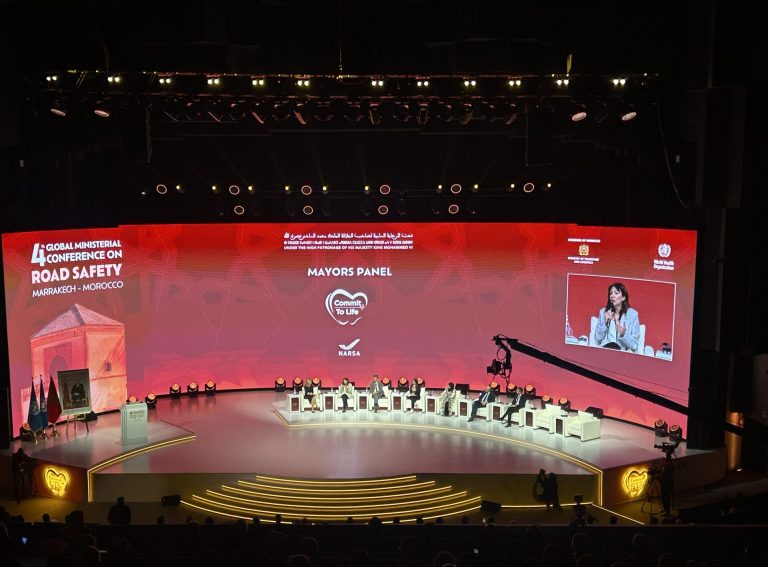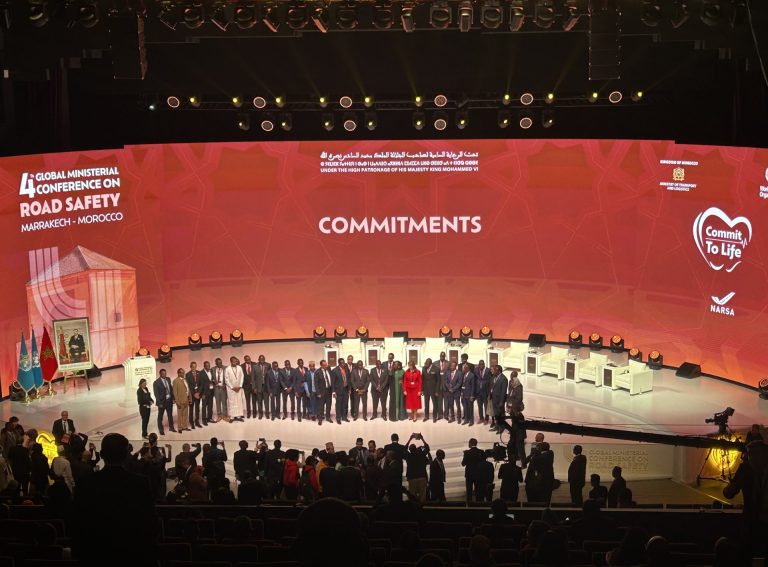Ministers from across the world convened at the 4th Global Ministerial Conference on Road Safety to discuss how to turn policy ideas and commitments into tangible action on the ground.
A high-level plenary featured an esteemed panel of six government figures from Moldova, Brazil, Guinea, Malaysia, Norway, and the Dominican Republic.
The session began with a Keynote from former Swedish Minister for Infrastructure Tomas Eneroth. Mr Eneroth hosted the 3rd Global Ministerial Conference on Road Safety five years ago in Stockholm, which launched the Decade of Action for Road Safety 2021 to 2030.
During his speech, Mr Eneroth looked back on the foundations of the Decade of Action for Road Safety, and ahead as we enter its second half.
“We gathered 1,700 delegates from all over the world – NGOs, the private sector, ministers, and national agencies – to work together to form the Stockholm Declaration. That Declaration was very important because it contains both a strong commitment to road safety from all the stakeholders, but also a framework to achieve the global goals on sustainable development.
“The connection is absolutely fundamental if you want to create sustainable safety. If the work on road safety does not include questions on climate, public health, and social sustainability, it will not last.”
Kicking the panel off, moderator Tumelo Mothotoane asked Moldova’s Chief of Staff to the Prime Minister Serghei Diaconu on the lessons learned from Moldova’s experience in translating policy frameworks into tangible results on the ground.
In the last Decade of Action for Road Safety (2011 to 2020), Moldova came close to being one of the few countries that met the 50% fatality reduction target – having cut its road deaths by 40 to 49%.
Mr Diaconu explained how the nation achieved this. Firstly, he emphasised the determination of the office, with Moldova experiencing around 500 annual deaths in 2010 – a high number for a country that had a population close to just three million.
“We sat down with the Prime Minister and ministers and decided that it cannot continue like this. We need to do something,” Mr Diaconu told the panel.
Second was a focus on engagement. “Let’s be serious – road safety is not very sexy. As a politician, you’re fighting with everybody.
“You’re fighting with drivers that don’t like to be punished, with other road users who don’t want penalties to rise or things to slow down, and your own colleagues from the Ministry of Transport who want roads built quickly and, in some cases, are less engaged with safer roads.”
To achieve this engagement, Mr Diaconu explained a focus on partnerships and collaborations with road users, NGOs, mass media, as well as in academia and law enforcement. As part of its national programme, Moldova began new enforcements, built new road police institutions, increased penalties, began education in schools, and took a new approach to safer roads.
Shifting to the challenges faced by low and middle-income countries in implementing road safety policies, Tumelo asked Guinea Minister of Transport Ousmane Gaoual Diallo what innovative low-cost strategies the West African country has implemented to improve road safety.
Mr Diallo listed a series of measures that came into force, built on the foundation of strong political will. These include reforming the driving license process to include greater accountability, limiting the loads allowed on trucks and implementing pedestrian areas and zebra crossings in urban centres.
“There have been many actions launched – ambitious programmes that have yielded results and will yield fruitful results in the years to come,” Mr Diallo told the panel.
“This will make it possible to take advantage of this summit in Marrakesh in order to meet with countries so that they can help us initiate collaboration beyond cultural barriers, focused on reducing mortality on the roads.
“The political willingness is here in Guinea and this is a beacon for more hope, so that we can bring our country to the level of expectation in terms of international standards.”
Turning to Professor Wong Shaw Voon, Chairman of the Malaysian Institute of Road Safety Research, Tumelo asked how digital innovation has helped bridge the gap between policy formulation and real-world application.
Professor Voon said that utilising technology is always an opportunity to support countries with implementing road safety measures, but it depends on how it is used and how much data is available.
He referred to connected vehicles and trip management informed by data, which can not only improve the efficiency of journeys but can tackle safety issues on the road. For instance, live feedback and trip data provides the opportunity to enforce real-time actions that tackle dangerous rider behaviour.
“This is a good opportunity that we have. But a lot of people will say this comes with costs and we do not have enough money. I believe that funding and resources are always a limitation. Money is never enough. No matter how much you put in, we always say that we can do better with more.
“My wish for everyone to take home is to maximise whatever we have and make use of it and start working on it. Don’t wait until the money is enough. It will never be.”
Shifting focus to Norway, a country that’s been at the forefront of road safety, Tumelo asked Minister of Transport Jon-Ivar Nygard what the critical factors have been behind the nation’s success.
Mr Nygard firstly emphasised that road safety and a Vision Zero is one of five main goals in the Norwegian national transport policy.
“I believe that this vision is the only ethical possibility a goal can have. No one should be killed or severely injured in transport. We cannot accept so many people to lose their lives on Norwegian roads. And we cannot accept that road accidents are the number one cause of deaths amongst young people globally.
“Proper management of road safety efforts is key to addressing this major problem.”
Mr Nygard strongly believes that the main reason behind Norway’s progress is the nation’s continued commitment and broad approach to road safety over recent years. Acknowledging that “road authorities cannot win on [their] own”, Mr Nygard explains that it’s been essential to include governmental and non-governmental stakeholders to systematically address challenges and work towards a common goal.
Onto Brazil, Tumelo notes that the country is one of the largest and most diverse transportation markets globally. On how Brazil ensures that road safety initiatives are effectively implemented across such a vast and varied landscape, Minister of Transport Renan Filho spoke on the country’s reliance on highways and buses to transport its population of 250 million people, as well as goods.
“We need to understand that Brazil is one of the major exporters in the world which leads us to say that we have a large number of accidents. We have 30,000 fatalities on federal roads or municipal roads per year.”
To reach the Decade of Action 2030 target, Mr Filho calls for a coordinated federal approach between the Ministry of Transportation and other offices. He also calls for transparency and for governments to share the results of their road safety policies over election cycles.
For the Dominican Republic, Executive Director of the National Authority for Transport Milton Morrison made reference to road traffic accidents being a “silent pandemic”.
“In the year 2020 when the Covid-19 pandemic broke out, around 2,411 people died in the Dominican Republic due to traffic accidents. We had more people who died due to car accidents than those people who died during Covid.
“When we take the numbers from 2021 and 2022 when we opened the Dominican Republic, we realised that deaths due to traffic accidents were double the deaths from Covid-19,” Mr Morrison said.
Accordingly, the Dominican Republic declared road safety as a high national priority issue three months ago with the President signing a historic decree for a national pact on road safety. This included more than 20 civil society organisations, associations and authorities seeking a solution to the road safety problem.




